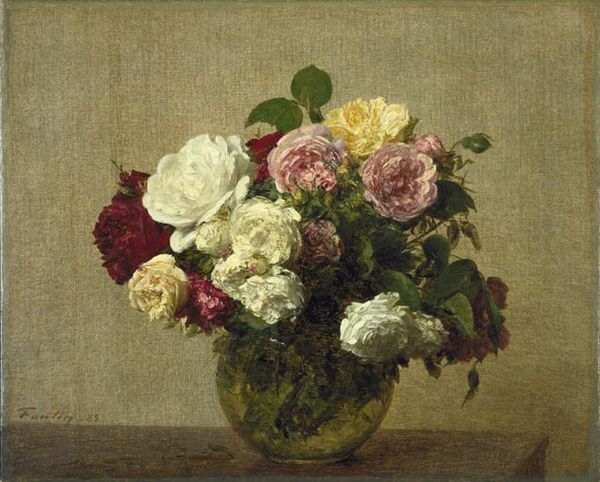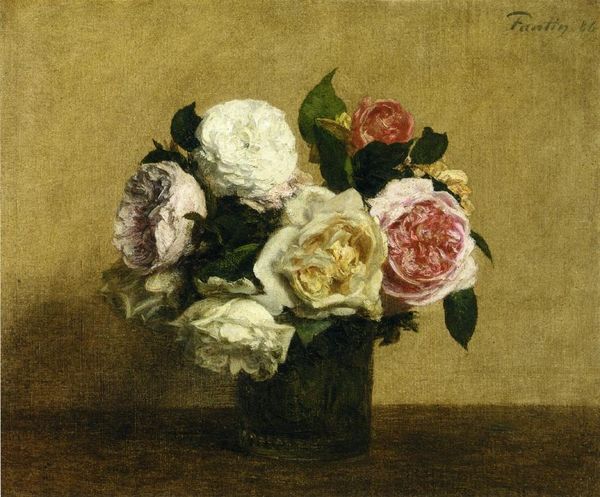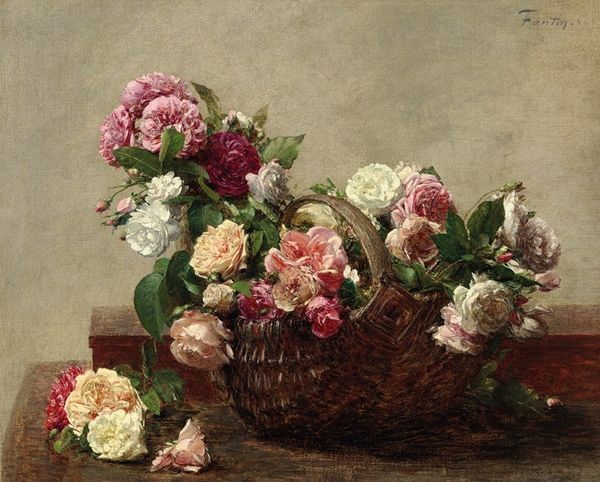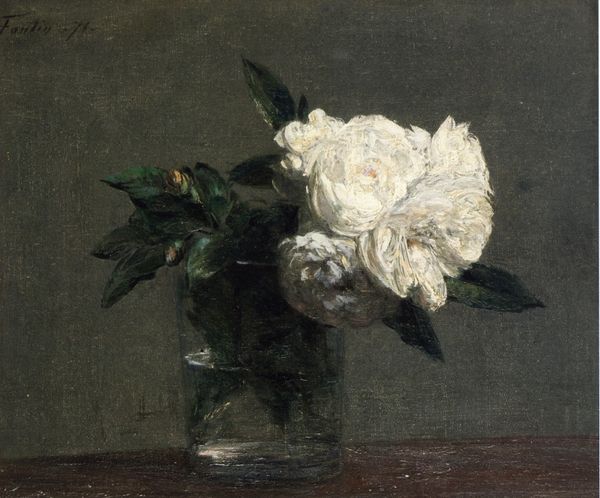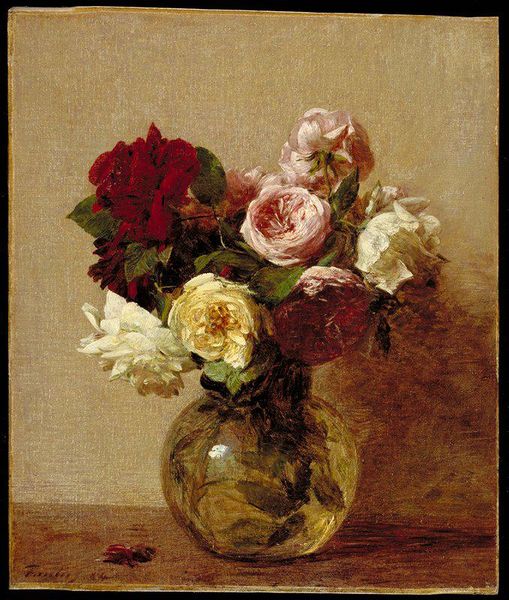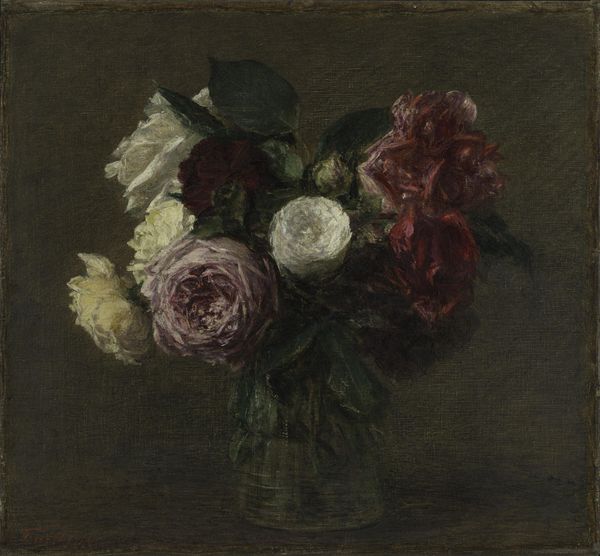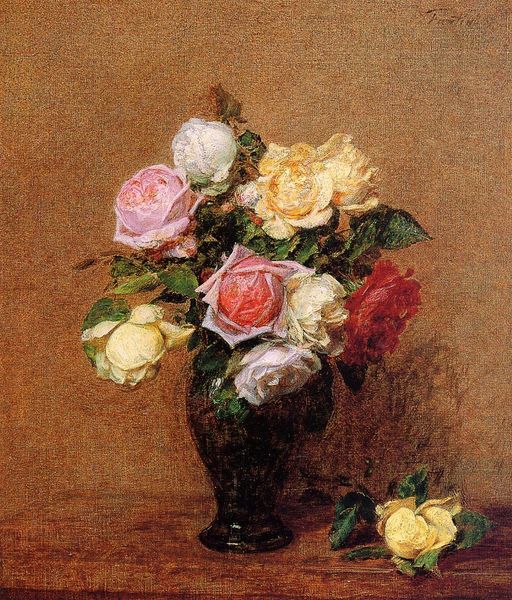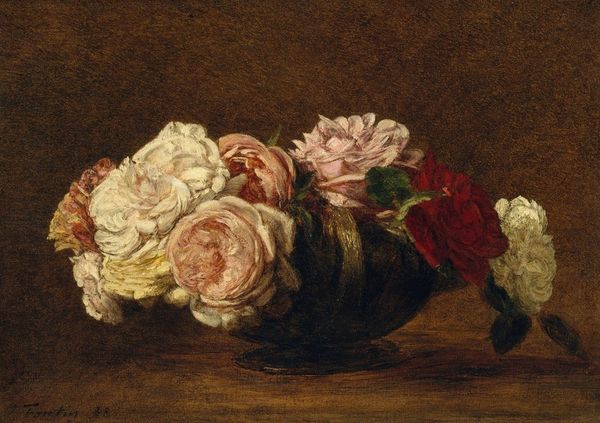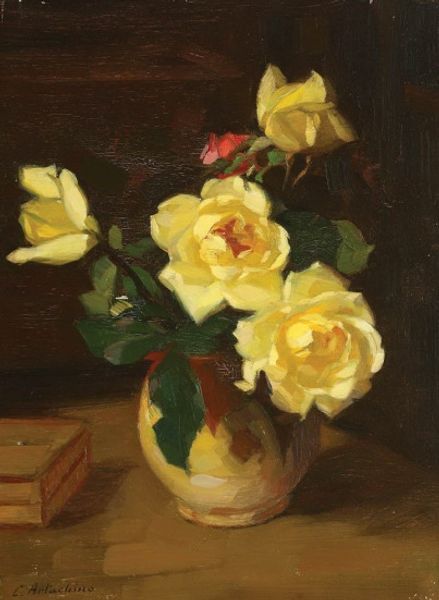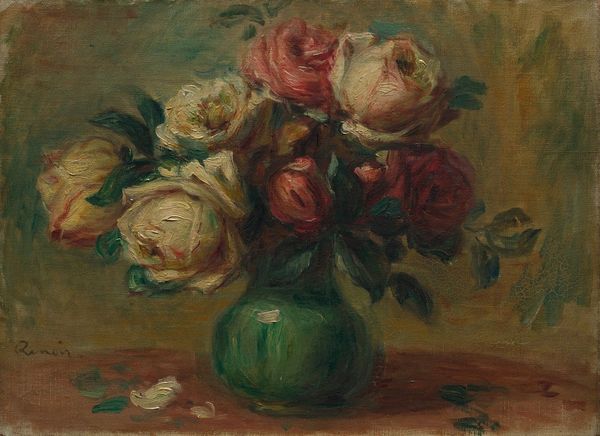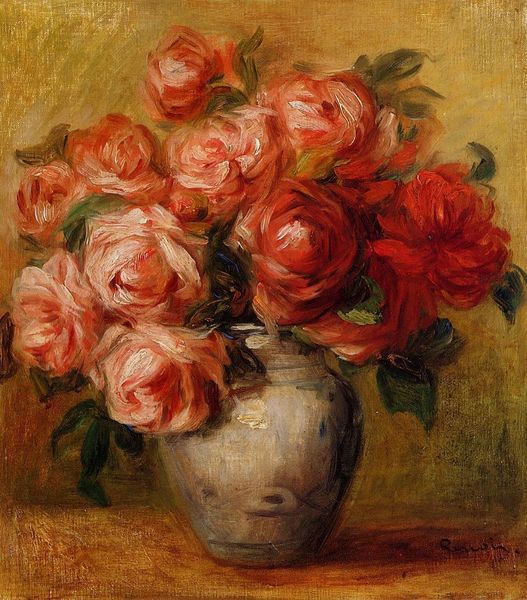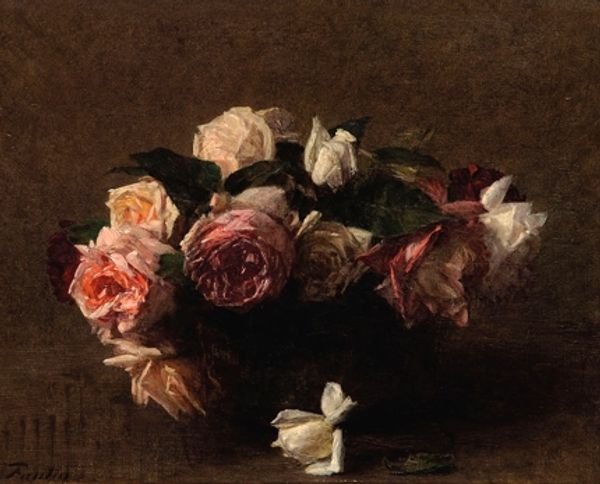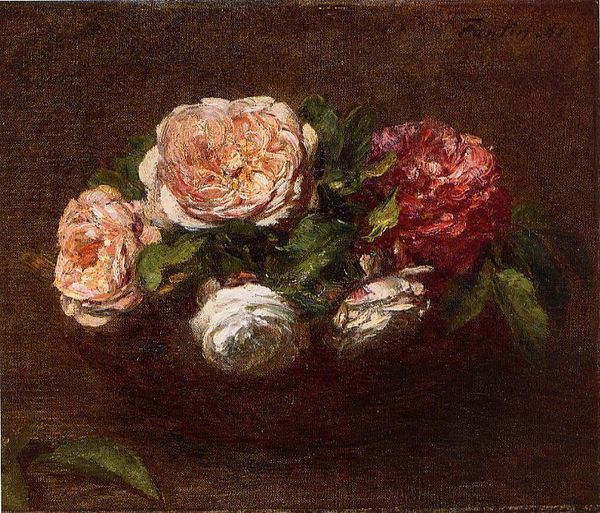
Dimensions: 10 5/16 × 12 3/8 in. (26.2 × 31.4 cm)
Copyright: Public Domain
Editor: Oh, this is pretty. Makes me think of a quiet afternoon, sunlight barely kissing the petals. Almost like a secret moment captured. Curator: That's a beautiful way to put it. We are looking at Henri Fantin-Latour's "Roses in a Bowl," an oil-on-canvas painted in 1881. Fantin-Latour was a master of still life, and this piece is a particularly fine example of his dedication to representing the quiet beauty of everyday life, particularly his profound relationship with flowers. Editor: You know, it’s interesting how he positions them. The light is so dramatic against that dark background. It makes the flowers almost glow, each one a little portrait in itself. Curator: Indeed. And it’s key to note that Fantin-Latour’s artistic development unfolded amidst broader shifts in art. "Roses in a Bowl," exemplifies the tensions between academic realism and the burgeoning Impressionist movement in France, each a distinct reflection of bourgeois sensibilities. One, focused on precision, the other, a world bathed in feeling. Editor: Bourgeois, huh? Well, it certainly feels like something you’d find in a well-to-do parlor, but there's something so fragile about them too. I guess flowers and fleeting beauty are inherently melancholic in that way. Almost like he’s saying, “Enjoy this beauty, because it won’t last.” Curator: Absolutely, we could read the transience of beauty, or even privilege, within the social constructs of late 19th-century France, through the symbol of these wilting roses and think about their presence as emblems of power structures and mortality within French society. Editor: I suppose it is easy to be romantic and just look at them as…roses, ha! The way he uses such gentle strokes gives the flowers this lovely, almost dreamlike quality. Do you think he worked from real roses? I mean, some artists do that. Curator: He very likely did work from real life. Many scholars point out that Fantin-Latour painted directly from nature to showcase an idealized, nearly hyperreal view that diverges considerably from traditional garden paintings. His focus seems to have been on a deeper essence rather than absolute botanical accuracy. Editor: It's a bit sad, knowing these perfect little bursts of life have long faded, yet here they are, still whispering secrets on canvas. Art really is wild, isn't it? Curator: It certainly offers us unique portals, as viewers, into intersecting histories, both painted and lived.
Comments
No comments
Be the first to comment and join the conversation on the ultimate creative platform.
